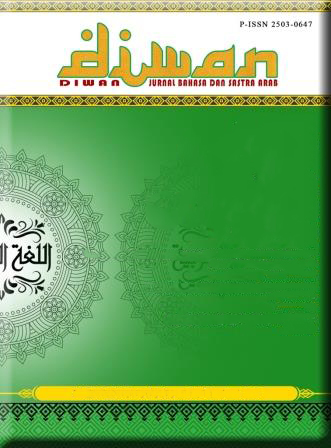A Comparative Study of the Calligraphic Rules of Muhammad Shawqi and Hashim Muhammad Al-Baghdadi in the Naskh Script
DOI:
https://doi.org/10.24252/diwan.v11i1.57197Keywords:
Arabic Calligraphy, Muhammad Shawqi, Hashim Muhammad Al-Baghdadi, Naskh Script, Calligraphic RulesAbstract
This This study compares the calligraphic rules of two renowned Arabic calligraphers, Muhammad Shawqi and Hashim Muhammad Al-Baghdadi, with a focus on their treatment of the Naskh script. Using a comparative qualitative approach, the research analyzes their methods for forming both isolated and connected letters. The findings highlight key stylistic differences: Shawqi favored elongated, intricate letterforms suited for high-quality manuscript production, while Al-Baghdadi employed a simplified and systematic style aimed at educational accessibility. Despite these differences, both shared pedagogical practices, such as beginning lessons with the prayer "Rabbi yassir wa la tu’assir" and starting instruction with isolated letters. The study concludes that Shawqi and Al-Baghdadi played complementary roles in the evolution of Arabic calligraphy—preserving its artistic excellence and expanding its reach through education. This analysis offers new insights into the stylistic and instructional legacies of both figures within the broader context of Arabic calligraphic tradition.
مستخلص
تهدف هذه الدراسة إلى إجراء مقارنة منهجية بين قواعد الخط عند اثنين من أشهر الخطاطين العرب المعاصرين، وهما محمد شوقي وهاشم محمد البغدادي، مع التركيز على معالجتهما لخط النسخ. ومن خلال منهج نوعي مقارن، تتناول الدراسة تحليل الأساليب الفنية التي اعتمدها كل منهما في تشكيل الحروف المفردة والمترابطة، وذلك في سياق تطور هذا الفن العربي الأصيل. وقد كشفت النتائج عن وجود فروق جوهرية في الأسلوب الفني بين الخطاطين؛ حيث اتسم أسلوب شوقي بطول الحروف وتعقيد أشكالها، مما جعله مناسبًا لإنتاج المخطوطات ذات الجودة العالية، في حين تميز أسلوب البغدادي بالبساطة والنظام، مما جعله أكثر ملاءمة للأغراض التعليمية ونقل المهارات الخطية للمبتدئين. ورغم هذه الفروق، يشترك الخطاطان في جملة من الممارسات التربوية، من أبرزها افتتاح الدروس بالدعاء المأثور "ربّ يسّر ولا تعسّر"، والبدء بتعليم الحروف المفردة. وتخلص الدراسة إلى أن محمد شوقي وهاشم البغدادي قد أدّيا دورين تكامليين في مسيرة تطوّر الخط العربي؛ فبينما ساهم الأول في الحفاظ على القيمة الفنية والجمالية لهذا الفن، أسهم الثاني في نشره وتيسير تعليمه على نطاق أوسع. وتوفر هذه الدراسة رؤية تحليلية معمقة للإرث الفني والتعليمي لكلا الخطاطين، ضمن الإطار العام لتقاليد الخط العربي وتطوّره المعاصر
Downloads
References
Al-Ansari, B. A., ‘Interrelated Histories, Practices, and Forms of Communication: Using Arabic Calligraphy to Learn Arabic Typography.’, 2015 <https://digital.library.unt.edu/ark:/67531/metadc804911/>
Al-Baghdadi, H. M., and A. A. Hmood, ‘Formal Organization in the Calligraphy Panel of the Calligrapher Hashim Muhammad Al-Baghdadi’, Integrated Journal for Research in Arts and Humanities, 2.3 (2022), pp. 38–47, doi:https://doi.org/10.55544/ijrah.2.3.31






